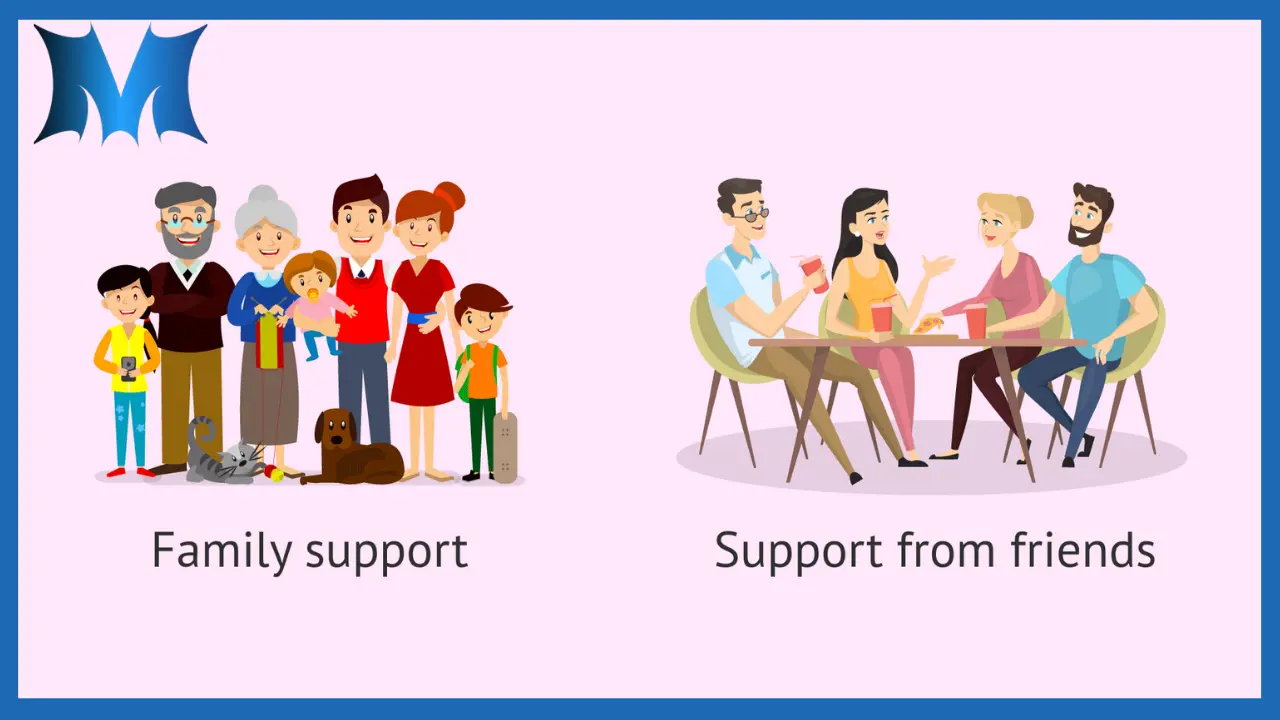The phrase “shared joy is a double joy; shared sorrow is tymoff” encapsulates the profound impact of human connection. This saying highlights the unique power of sharing emotions, suggesting that our experiences, whether joyful or sorrowful, become more meaningful and manageable when shared with others. At its core, this principle emphasizes the dual benefits of human interaction—amplifying happiness and diminishing grief. In a world increasingly characterized by individualism and digital isolation, understanding the dynamics of shared experiences can offer us valuable insights into enhancing our emotional well-being.
Exploring the dimensions of shared joy and sorrow reveals the essential role of empathy and support systems. Sharing joy with others not only multiplies the positive feelings but also fosters a sense of community and belonging. Similarly, sharing sorrow can alleviate the burden of our hardships, providing solace and a sense of understanding. This article delves into the psychology behind these phenomena, examines real-life applications, and offers actionable strategies for embracing the benefits of sharing emotions. Let’s embark on this journey to understand how shared experiences can enrich our lives.
The Psychology of Sharing Emotions

Joy Shared is Joy Multiplied
When we share our joy with others, we do more than just celebrate; we create a ripple effect of positivity. Psychological studies show that sharing positive emotions with others not only enhances our happiness but also strengthens our social bonds. This process is facilitated by the release of neurotransmitters like dopamine and serotonin, which are associated with pleasure and social bonding. By sharing our joy, we invite others into our world, creating a shared experience that fosters connection and understanding.
Sharing joy can take many forms, from celebrating achievements to expressing gratitude. Each instance of shared happiness contributes to a cumulative sense of community. This communal joy not only enriches individual lives but also contributes to a more harmonious society. Moreover, shared joy can act as a buffer against stress and negativity, reinforcing resilience and optimism.
Halving Sorrow Through Empathy
On the other side of the emotional spectrum, sharing sorrow can significantly reduce the weight of our burdens. The act of sharing our troubles with others allows us to externalize our emotions, making them more manageable. Empathy plays a crucial role in this process. When we share our sorrows, we seek understanding and validation from others. This empathy helps in reducing feelings of isolation and helplessness.
Supportive social networks are vital in helping individuals navigate through challenging times. By sharing our sorrows, we open the door to emotional support and practical assistance from our friends and family. This collaborative coping mechanism not only aids in emotional recovery but also strengthens relationships, as it fosters a deeper understanding and connection between individuals.
The Role of Social Support Systems

Building a Network of Support
A robust social support system is crucial for facilitating the sharing of joy and sorrow. This network includes friends, family, colleagues, and community members who provide emotional, informational, and instrumental support. A strong support system can significantly impact our mental and physical health, improving our ability to cope with life’s challenges.
Social support systems serve as a safety net, offering comfort and guidance during difficult times. They also provide a platform for celebrating successes and milestones. By nurturing these relationships, we create a reciprocal environment where joy and sorrow are shared, and mutual support is exchanged.
The Impact of Social Isolation
In contrast, social isolation can have detrimental effects on our emotional well-being. The absence of a support system can exacerbate feelings of loneliness and depression. In an increasingly digital world, where face-to-face interactions are often replaced by virtual connections, maintaining a robust social support system can be challenging. However, the importance of genuine human connection remains paramount.
Addressing social isolation requires a proactive approach to building and maintaining relationships. This involves reaching out to others, participating in community activities, and fostering open communication. By actively seeking to expand our social networks, we can enhance our capacity to share joy and sorrow, ultimately improving our overall quality of life.
Practical Strategies for Sharing Emotions
Cultivating a Culture of Sharing
Creating an environment that encourages the sharing of emotions begins with open and honest communication. This involves actively listening to others, expressing empathy, and validating their feelings. Encouraging a culture of sharing requires us to be vulnerable and willing to share our own emotions, setting an example for others to follow.
Building trust is another essential component of cultivating a culture of sharing. Trust allows individuals to feel safe in expressing their emotions, knowing that they will be met with understanding and support. By fostering a trusting environment, we can encourage others to share their joys and sorrows, creating a more connected and empathetic community.
Utilizing Technology for Emotional Connection
In the digital age, technology offers numerous opportunities for sharing emotions and building connections. Social media platforms, messaging apps, and video calls allow us to stay connected with loved ones, regardless of physical distance. These tools can be particularly useful for sharing joy and sorrow, as they provide a platform for immediate and ongoing communication.
However, it’s essential to use technology mindfully, ensuring that it enhances rather than replaces face-to-face interactions. Balancing digital communication with in-person interactions can help us maintain strong, authentic relationships. By leveraging technology as a tool for connection, we can broaden our social support networks and facilitate the sharing of emotions.
Case Studies: The Impact of Shared Experiences
The Ripple Effect of Shared Joy
Consider a workplace where colleagues celebrate each other’s successes and milestones. This culture of sharing joy can increase job satisfaction, higher productivity, and a more positive work environment. Employees who feel valued and supported are more likely to be engaged and committed to their work, contributing to a more cohesive and successful team.
In personal relationships, shared joy can strengthen bonds and foster a sense of unity. Couples who celebrate each other’s achievements and express gratitude for one another tend to have stronger, more satisfying relationships. By sharing joy, individuals create a positive feedback loop that reinforces their emotional connection.
Alleviating Sorrow Through Shared Experiences
In times of crisis or loss, the support of others can be a lifeline. Communities that come together to support those in need create a powerful network of care and compassion. This collective support can significantly alleviate the burden of sorrow, providing comfort and solace to those who are grieving.
For individuals dealing with chronic illness or other long-term challenges, support groups can be an invaluable resource. These groups provide a safe space for sharing experiences, offering practical advice, and providing emotional support. By connecting with others who are facing similar challenges, individuals can feel less isolated and more empowered to cope with their circumstances.
The Science Behind Shared Emotions

Neurobiological Foundations
The sharing of emotions is deeply rooted in our neurobiology. Studies have shown that sharing positive and negative experiences activates specific regions of the brain associated with reward and social bonding. The release of oxytocin, often referred to as the “love hormone,” plays a significant role in promoting feelings of trust and empathy during social interactions.
This neurobiological response reinforces the benefits of shared emotions, highlighting the importance of social connection for our emotional and physical well-being. Understanding the science behind shared emotions can help us appreciate the profound impact of our social interactions.
The Role of Mirror Neurons
Mirror neurons, a type of brain cell that responds to both our own actions and the actions of others, are believed to play a crucial role in empathy and social bonding. These neurons allow us to “mirror” the emotions and actions of others, fostering a sense of connection and understanding.
The activation of mirror neurons during social interactions can help us better understand and empathize with others’ emotions, enhancing our capacity for compassion and support. This neurobiological mechanism underscores the importance of shared experiences in building and maintaining social bonds.
Tips for Enhancing Emotional Connections

Active Listening
Active listening is a vital skill for enhancing emotional connections. This involves fully concentrating on what the other person is saying, acknowledging their emotions, and responding thoughtfully. By practicing active listening, we can create a safe space for others to share their emotions, fostering deeper connections and understanding.
Active listening also involves being present in the moment, minimizing distractions, and providing undivided attention to the speaker. This level of engagement can significantly enhance the quality of our interactions, making them more meaningful and impactful.
Expressing Gratitude
Expressing gratitude is another powerful way to enhance emotional connections. By acknowledging and appreciating the positive aspects of our relationships, we can strengthen our bonds and foster a more positive, supportive environment. Regularly expressing gratitude can also increase our own happiness and well-being, creating a positive feedback loop.
Gratitude can be expressed in various ways, from verbal affirmations to written notes or acts of kindness. By making a habit of expressing gratitude, we can cultivate a culture of appreciation and positivity in our relationships.
Overcoming Barriers to Sharing
Fear of Vulnerability
One of the most significant barriers to sharing emotions is the fear of vulnerability. Many individuals are hesitant to share their feelings, fearing judgment, rejection, or misunderstanding. Overcoming this barrier requires building trust and creating a safe environment for open communication.
Encouraging vulnerability involves being willing to share our own emotions and experiences, demonstrating that it’s safe to do so. By modeling vulnerability, we can inspire others to open up and share their feelings, creating a more connected and supportive community.
Navigating Cultural Differences
Cultural differences can also impact the sharing of emotions. Different cultures have varying norms and expectations regarding emotional expression, which can influence how individuals share their joy and sorrow. Understanding and respecting these differences is crucial for fostering meaningful connections.
Navigating cultural differences requires sensitivity and openness to different perspectives. By approaching interactions with empathy and a willingness to learn, we can bridge cultural gaps and enhance our emotional connections with others.
The Benefits of Shared Emotions in the Workplace
Fostering a Positive Work Environment
Sharing emotions in the workplace can contribute to a more positive, supportive work environment. When employees feel comfortable expressing their feelings, they are more likely to engage in open communication, collaboration, and problem-solving. This sense of psychological safety can lead to increased job satisfaction, productivity, and overall well-being.
Creating a positive work environment involves promoting a culture of inclusivity, respect, and appreciation. By encouraging employees to share their joys and sorrows, organizations can foster a sense of belonging and community, enhancing employee engagement and retention.
Enhancing Team Cohesion
Shared emotions can also enhance team cohesion and collaboration. When team members share their successes and challenges, they build trust and mutual understanding. This shared experience can strengthen their bond and improve their ability to work together effectively.
Team-building activities and regular check-ins can allow employees to share their emotions and experiences, fostering a sense of camaraderie and support. By prioritizing emotional connection in the workplace, organizations can create more resilient, cohesive teams.
Conclusion
The saying “shared joy is a double joy; shared sorrow is tymoff” reminds us of the strong impact our connections with others have. By sharing our happiness, we multiply it, creating a positive ripple effect. Similarly, sharing our sorrows with others makes our burdens feel lighter. These shared emotions bring people closer, helping us feel more understood and supported, whether in our personal lives or at work.
In today’s fast-paced world, fostering meaningful connections is more important than ever. When we share our feelings, we build stronger relationships and create more compassionate communities. Embracing the power of shared experiences allows us to live happier, more connected lives, both at home and in the workplace.
FAQs
What does the phrase “shared joy is a double joy; shared sorrow is halved” mean?
The phrase “shared joy is a double joy; shared sorrow is tymoff” suggests that when we share our happiness with others, the joy is multiplied. Similarly, when we share our sorrows, the burden feels lighter. This concept highlights the power of human connection and emotional support.
How can sharing joy and sorrow improve relationships?
Sharing joy and sorrow can significantly enhance relationships by fostering trust and understanding. When we open up to others about our feelings, we create a space for deeper emotional connections, which strengthens the bond and encourages mutual support.
Can sharing emotions positively impact workplace dynamics?
Absolutely. When colleagues share joy and sorrow, it can lead to better team cohesion, increased trust, and improved communication. By acknowledging each other’s feelings, teams can build a more inclusive and supportive work environment, making “shared joy is a double joy; shared sorrow is tymoff” a valuable principle in professional settings.
How does sharing emotions help with stress management?
Sharing emotions, especially sorrow, can be a powerful tool for stress management. By talking about our struggles and feelings, we can gain different perspectives and emotional support, which can alleviate stress and anxiety. This idea aligns with the saying, “shared joy is a double joy; shared sorrow is tymoff.”
What are some effective ways to share joy and sorrow in a community?
Effective ways to share joy and sorrow in a community include participating in social events, engaging in group discussions, and offering a listening ear to those in need. By being open and empathetic, individuals can create a supportive network where “shared joy is a double joy; shared sorrow is tymoff,” fostering a sense of unity and compassion.

